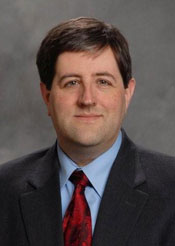The Uncertainty Session - Understanding Statistics and Clinical Trials
Presentations
SU-A-Therapy Room-0 (Sunday, 4/18/2021) 10:00 AM - 12:00 PM [Eastern Time (GMT-4)]
Many research articles that are published in the journals Medical Physics and the Journal for Applied Clinical Medical Physics report their results using statistical tools that may not be familiar to clinic medical physicists in radiation therapy. This presentation will review the frequency with which the different tools are used in recent publications, the contexts in which they are used, and how the practicing clinical physicist should assess the appropriateness of their application and the significance of the reported findings. The most frequently used tools are the P-value and correlation coefficient. Other common statistical tests include confidence levels, sensitivity and specificity tests, t-tests, Cohen’s kappa statistics, excess absolute risk, the Wilcoxon signed-rank test, Dice similarity tests, and analysis of variance tests.
Learning Objectives:
1. Assess whether a research manuscript’s use of a particular test is meaningful.
2. Interpret the significance of the reported statistical findings.
3. Select the appropriate tool for one’s own research projects and estimate the sample size required to achieve the desired statistical power.
The Medical Physics Navigator for Clinical Trials will teach medical physicists how to navigate the clinical trial space and how to be an impact player in trials. The session will start with a brief overview covering: the different types of clinical trials; the clinical trial approval process; and the key personnel involved in trial development, approval, and accrual. Organizations that sponsor and assist with conducting clinical trials will be reviewed, and physicists will be taught how to leverage guidelines and references from these organizations. Roles for medical physicists at the clinical level will be discussed, including credentialing, assuring plan compliance, privacy considerations, data preparation, recordkeeping, and dealing with protocol deviations. A representative from the Imaging and Radiation Oncology Core (IROC) will provide a detailed description of trial credentialing, including common challenges and pitfalls associated with IROC phantoms, IROC image guidance assessments, and data submission. A Radiation Oncologist will discuss physician-physicist interactions and the crucial role physicists play in avoiding trial deviations and violations. The presentation will end with a summary on how the listener can have a strong presence in clinical trials within the clinic.
Learning Objectives:
1. Distinguish the different types of clinical trials and the key personnel involved in their
success.
2. Understand the steps involved in clinical trial credentialing.
3. Identify how medical physicists can contribute to clinical trials.
Funding Support, Disclosures, and Conflict of Interest: Timothy Ritter works for the Veterans Health Administration and Virginia Commonwealth University, and is performing work under an AHRQ grant.
Keywords
Statistical Analysis, Clinical Trials
Taxonomy
TH- Dataset Analysis/Biomathematics: biostatistics and clinical trial design
Contact Email






